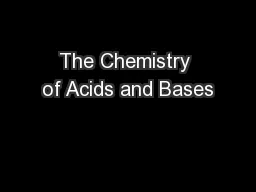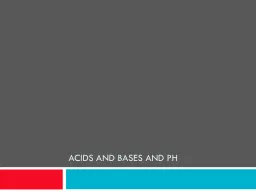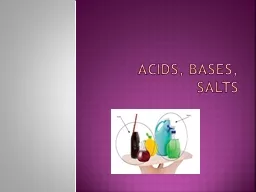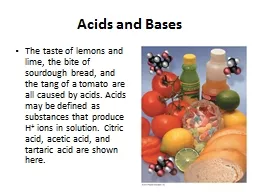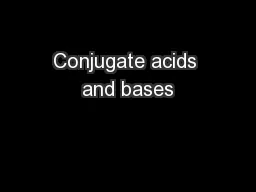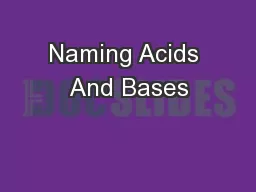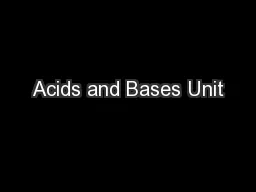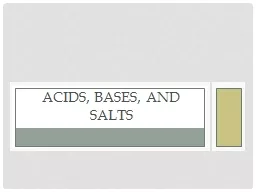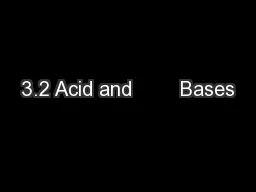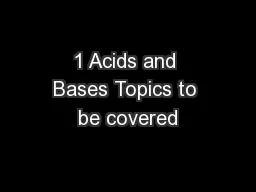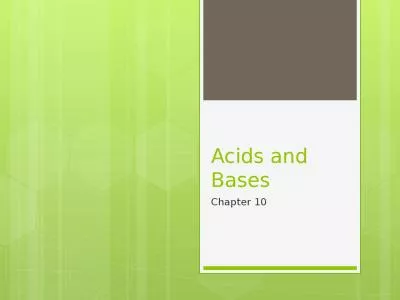PPT-The Chemistry of Acids and Bases
Author : sherrill-nordquist | Published Date : 2018-11-03
Acids 2 pH below 7 turns litmus paper red taste sour reacts with metals to produce H 2 g generally starts with a hydrogen ion H gt OH HCl Bases 3 pH greater
Presentation Embed Code
Download Presentation
Download Presentation The PPT/PDF document "The Chemistry of Acids and Bases" is the property of its rightful owner. Permission is granted to download and print the materials on this website for personal, non-commercial use only, and to display it on your personal computer provided you do not modify the materials and that you retain all copyright notices contained in the materials. By downloading content from our website, you accept the terms of this agreement.
The Chemistry of Acids and Bases: Transcript
Download Rules Of Document
"The Chemistry of Acids and Bases"The content belongs to its owner. You may download and print it for personal use, without modification, and keep all copyright notices. By downloading, you agree to these terms.
Related Documents

